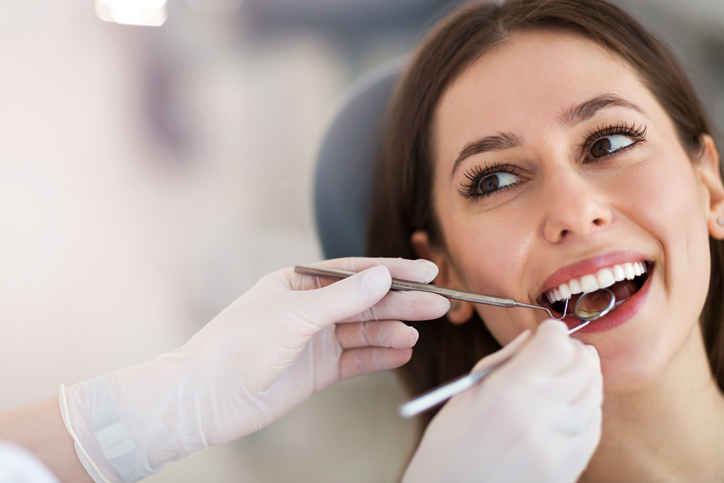Let’s face it: the thought of going to the periodontist can cause anxiety for many people. Whether it’s the sound of the equipment, the fear of discomfort, or just the general idea of someone working on your gums, periodontal visits can stir up nerves for both kids and adults alike. But here’s the good news—you’re not alone, and modern periodontal practices have come a long way in making your experience as comfortable and anxiety-free as possible.
In fact, your periodontist likely understands your worries and has plenty of tools and strategies in place to help you relax. From offering entertainment distractions to different kinds of sedation options, they’re committed to making sure your visit isn’t something you dread. Let’s break down a few ways periodontal teams work to create a more peaceful and even enjoyable visit for patients with dental anxiety.
Distractions to Make Time Fly
One of the simplest yet most effective ways to ease periodontal anxiety is through distraction. It might sound basic, but it works. Many periodontists today offer different forms of entertainment right in the treatment room to keep your mind off what’s happening in your mouth. You’ll often find:
- Headphones for music or podcasts: Some periodontal offices offer noise-canceling headphones so you can pop on your favorite playlist or podcast and zone out while the periodontist works. If the buzzing and scaling sounds are what bother you, this is a lifesaver.
- TV screens: Many practices now have TVs either on the wall or mounted on the ceiling, giving you something to focus on besides the procedure. You can pick out a show or movie and let yourself get immersed while the periodontal team takes care of your gums.
- Virtual reality (VR): In more advanced settings, VR headsets are even available to transport you to a relaxing virtual world while your procedure happens. Imagine being on a beach, in a forest, or even in outer space—all while sitting in the periodontist’s chair!
The idea is simple: keeping your mind occupied with something you enjoy can make the time pass quicker and reduce that creeping anxiety. And it’s not just for adults—kids especially love the chance to watch cartoons or play a game while they get their teeth and gums checked.
Sedation Dentistry: For When You Need a Little Extra Help
Sometimes, distractions alone aren’t enough, and that’s completely okay. Periodontists understand that, for some people, dental anxiety can be so strong that the very idea of sitting in the dental chair is overwhelming. That’s where sedation dentistry comes in.
Sedation dentistry offers several options for patients who need a little extra help feeling calm and relaxed. These techniques range from mild relaxation to deep sedation, and your periodontist will work with you to choose the right one based on your level of anxiety and the type of procedure you’re having done.
Let’s take a closer look at the types of sedation available and how each one works.
1. Nitrous Oxide (Laughing Gas)
If you’ve ever heard of laughing gas, you already know about nitrous oxide. This is one of the most common and mild forms of sedation used in periodontal care. It’s perfect for people who experience low to moderate anxiety but still want to remain fully conscious during their procedure.
- How it works: You’ll breathe in a mixture of nitrous oxide and oxygen through a small mask placed over your nose. Within just a few minutes, you’ll feel a sense of calm wash over you—many people even feel a bit euphoric or giggly, hence the name “laughing gas.”
- Benefits: The best part? Nitrous oxide wears off quickly, so you can drive yourself home after the appointment. It’s safe for both adults and children and doesn’t leave you with that groggy feeling afterward.
- Who it’s for: If you’re just a bit nervous or need something to take the edge off, nitrous oxide is a great option.
2. Oral Sedation
If you need a bit more relaxation than nitrous oxide can provide, oral sedation might be the answer. This method involves taking a prescription pill before your appointment to help you feel calm and a little drowsy. Depending on the dosage, oral sedation can range from mild to moderate sedation.
- How it works: About an hour before your periodontal appointment, you’ll take a pill—usually something like benzodiazepines—that will help you relax. By the time you’re in the chair, you’ll feel very calm, and some people may even feel like they’re floating or in a dreamy state. You’ll still be awake and able to respond to your periodontist, but your anxiety will be significantly reduced.
- Benefits: This type of sedation doesn’t require needles, and because it’s taken orally, it’s a straightforward way to manage anxiety. However, the effects linger, so you’ll need someone to drive you home afterward.
- Who it’s for: Oral sedation is ideal for patients with moderate dental anxiety or those undergoing longer, more complex procedures like gum grafts or deep cleanings.
3. IV Conscious Sedation
For patients with more severe dental anxiety—or for those undergoing major procedures—IV conscious sedation offers a deeper level of sedation. This form of sedation is administered intravenously, meaning it goes directly into your bloodstream and takes effect quickly.
- How it works: A sedative is delivered through a small needle inserted into your arm or hand. The effects are almost immediate, and you’ll feel deeply relaxed. Most people don’t fall fully asleep, but they’ll enter a “twilight” state, where they’re conscious but don’t remember much of the procedure.
- Benefits: Because IV sedation can be controlled more precisely than oral sedation, the periodontist can adjust the level of sedation throughout the procedure. This option is perfect for people with severe anxiety, phobias, or who need extensive periodontal work.
- Who it’s for: If you’re someone who has been avoiding the periodontist for years due to fear, or you need a lot of work done in one sitting, IV sedation can make the experience much more manageable. However, as with oral sedation, you’ll need someone to drive you home afterward.
4. General Anesthesia
General anesthesia is the deepest form of sedation and is usually reserved for very complex periodontal procedures, such as dental implants or extensive gum surgery like bone grafting. Under general anesthesia, you’ll be completely unconscious and unaware of what’s happening during the procedure.
- How it works: General anesthesia is typically administered by an anesthesiologist in a hospital or specialized periodontal setting. You’ll be put to sleep, and you won’t feel, hear, or remember anything during the procedure.
- Benefits: General anesthesia is perfect for patients with extreme dental anxiety or for procedures where it’s important that the patient doesn’t move at all. Recovery time is longer, and it’s usually only recommended for major surgeries.
- Who it’s for: This option is best suited for patients with extreme dental phobia, special needs, or those undergoing major oral surgeries.
Taking the Fear Out of Periodontal Visits
Dental anxiety is real, but it doesn’t have to control your health. Whether you need a pair of headphones to listen to your favorite music, partial sedation to keep you calm, or deeper sedation for a more intense procedure, your periodontist in Phoenix, AZ, Dr. Trujillo, is ready to help. His goal is to make sure you’re comfortable, safe, and pain-free (or as close as possible!) throughout your visit.
The next time you’re feeling anxious about going to the periodontist, remember that you have options—and don’t be afraid to talk to your periodontist about what might work best for you. There’s no need to suffer in silence or put off necessary care. Modern periodontal care is all about patient comfort, and with the right combination of distractions, sedation, and a caring periodontal team, you can get through your next appointment with ease.

Don’t Let Dental Anxiety Hold You Back
Call Dr. Trujillo in Phoenix, AZ, for a personalized and comfortable treatment plan! We want you to feel confident and smile your best. Call today!





